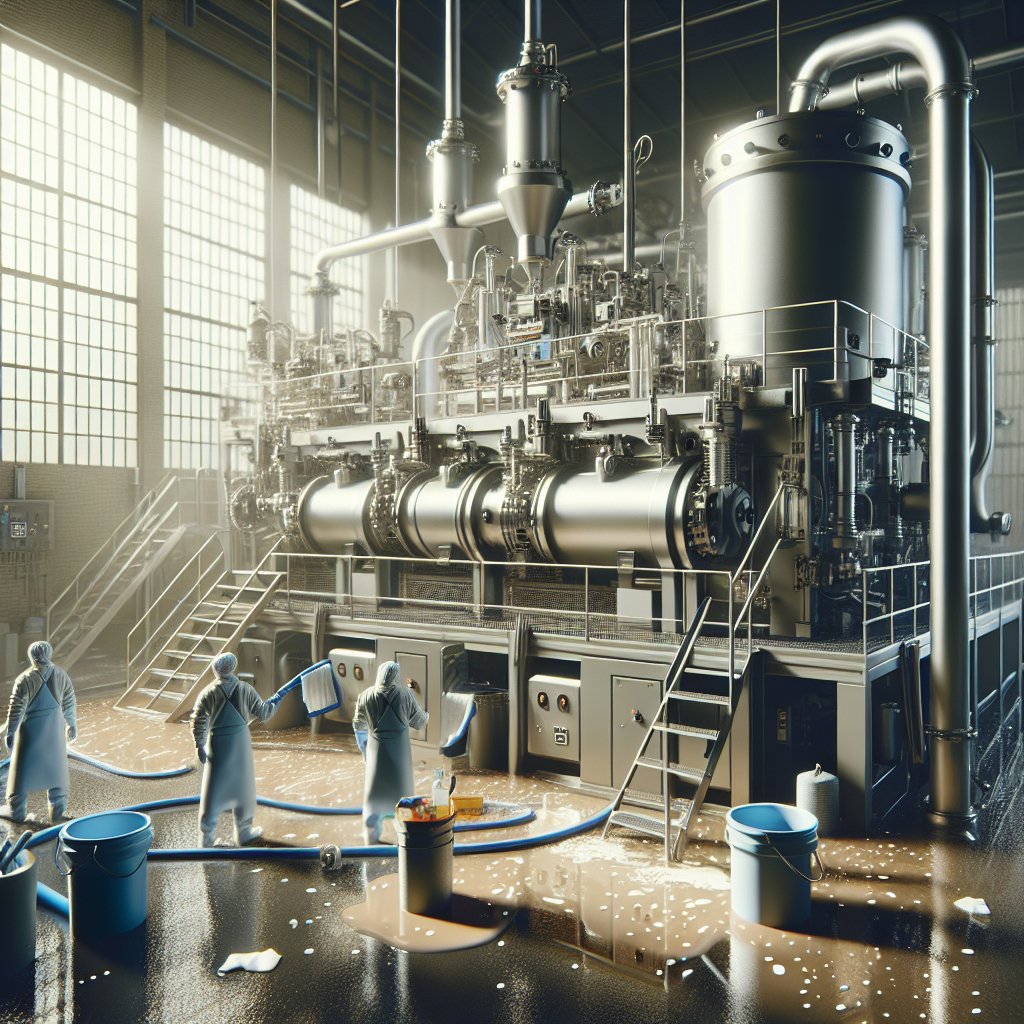
Maintaining cleanliness and sanitation in industrial settings is crucial for ensuring the safety, efficiency, and longevity of equipment. This article delves into the best practices for industrial equipment cleaning and sanitation, providing insights into effective methods and strategies that can be implemented across various industries.
Understanding the Importance of Industrial Equipment Cleaning
Industrial equipment is often subjected to harsh conditions, including exposure to dust, grime, and other contaminants. Over time, these elements can accumulate, leading to equipment malfunction, reduced efficiency, and even safety hazards. Regular cleaning and sanitation are essential to prevent these issues and to maintain optimal performance.
Moreover, in industries such as food processing, pharmaceuticals, and healthcare, maintaining high standards of cleanliness is not just a matter of efficiency but also a regulatory requirement. Contaminated equipment can lead to product recalls, legal issues, and damage to a company’s reputation. Therefore, understanding the importance of industrial equipment cleaning is the first step towards implementing effective sanitation practices.
Best Practices for Effective Cleaning and Sanitation
1. Establishing a Cleaning Schedule
One of the most effective ways to ensure regular cleaning is by establishing a comprehensive cleaning schedule. This schedule should be tailored to the specific needs of the equipment and the industry. Factors such as the type of equipment, the nature of the contaminants, and the frequency of use should be considered when developing this schedule.
- Daily Cleaning: For equipment that is used continuously, daily cleaning may be necessary to prevent the buildup of contaminants.
- Weekly or Monthly Cleaning: Less frequently used equipment may only require weekly or monthly cleaning, depending on the level of exposure to contaminants.
- Deep Cleaning: Periodic deep cleaning should be scheduled to address areas that are not covered by regular cleaning routines.
2. Choosing the Right Cleaning Agents
The choice of cleaning agents is critical in ensuring effective sanitation. Different types of contaminants require different cleaning solutions. For instance, oil and grease may require degreasers, while biological contaminants may need disinfectants.
- Biodegradable Cleaners: Whenever possible, opt for biodegradable cleaning agents that are environmentally friendly and safe for workers.
- Non-Corrosive Solutions: Ensure that the cleaning agents used do not corrode or damage the equipment.
- Industry-Specific Cleaners: Some industries may require specialized cleaning agents that are designed to meet specific regulatory standards.
3. Implementing Proper Cleaning Techniques
Using the right cleaning techniques is as important as choosing the right cleaning agents. Proper techniques ensure that all parts of the equipment are thoroughly cleaned and sanitized.
- Manual Cleaning: For intricate equipment, manual cleaning may be necessary to reach all areas.
- Automated Cleaning Systems: In large-scale operations, automated cleaning systems can provide consistent and efficient cleaning.
- Pressure Washing: For heavy-duty equipment, pressure washing can effectively remove stubborn contaminants.
Training and Safety Considerations
Ensuring that staff are properly trained in cleaning and sanitation procedures is vital for maintaining high standards. Training should cover the correct use of cleaning agents, the operation of cleaning equipment, and safety protocols to prevent accidents.
1. Comprehensive Training Programs
Develop comprehensive training programs that include both theoretical and practical components. Employees should understand the importance of cleaning and sanitation, as well as how to effectively carry out these tasks.
- Regular Refresher Courses: Conduct regular refresher courses to keep staff updated on the latest cleaning techniques and safety protocols.
- Hands-On Training: Provide hands-on training sessions to ensure that employees are comfortable with the equipment and cleaning agents.
2. Safety Protocols
Implementing safety protocols is essential to protect employees from potential hazards associated with cleaning and sanitation processes.
- Personal Protective Equipment (PPE): Ensure that employees have access to appropriate PPE, such as gloves, masks, and goggles.
- Emergency Procedures: Establish clear emergency procedures in case of accidents or exposure to hazardous substances.
- Safe Handling of Chemicals: Train employees on the safe handling and storage of cleaning chemicals to prevent spills and accidents.
Monitoring and Continuous Improvement
Regular monitoring and evaluation of cleaning and sanitation practices are crucial for continuous improvement. By assessing the effectiveness of current practices, companies can identify areas for improvement and implement necessary changes.
1. Regular Inspections
Conduct regular inspections to ensure that cleaning and sanitation practices are being followed correctly. Inspections can help identify any lapses in procedures and provide an opportunity to address them promptly.
- Internal Audits: Perform internal audits to assess compliance with cleaning schedules and protocols.
- Third-Party Inspections: Consider engaging third-party inspectors to provide an unbiased assessment of cleaning practices.
2. Feedback and Adaptation
Encourage feedback from employees and stakeholders to identify potential improvements in cleaning and sanitation practices. Adaptation to new technologies and methods can enhance the effectiveness of these practices.
- Employee Feedback: Create channels for employees to provide feedback on cleaning procedures and suggest improvements.
- Technological Advancements: Stay informed about technological advancements in cleaning equipment and methods to enhance efficiency.
In conclusion, maintaining high standards of cleanliness and sanitation in industrial settings is essential for ensuring the safety, efficiency, and longevity of equipment. By implementing best practices, providing proper training, and continuously monitoring and improving procedures, companies can achieve optimal results in their cleaning and sanitation efforts.

